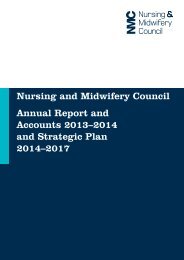Journal_1_2014_final_WEB
Journal_1_2014_final_WEB
Journal_1_2014_final_WEB
You also want an ePaper? Increase the reach of your titles
YUMPU automatically turns print PDFs into web optimized ePapers that Google loves.
12th Scientific Meeting of the<br />
Diabetic Foot<br />
Study Group<br />
of the EASD<br />
12-14 September <strong>2014</strong><br />
Bratislava, Slovakia<br />
Conference theme:<br />
Advancement<br />
of knowledge<br />
on all aspects of<br />
diabetic foot care<br />
Main subjects during conference:<br />
Epidemiology<br />
Basic and clinical science<br />
Diagnostics<br />
Classification<br />
Foot clinics<br />
Biomechanics, Osteoarthropathy<br />
Orthopaedic surgery<br />
Infection<br />
Revascularisation<br />
Uraemia<br />
Wound healing/outcome<br />
www.dfsg.org<br />
cells is distinctly different from normal dermal tissue, and<br />
because cell function and tissue performance is largely<br />
dependent on the cellular microenvironment, the healing<br />
process is trapped in a vicious circle. Ideally, tissue engineering<br />
could play an important role in the development<br />
of a scaffold that is able to guide the stem cells into the<br />
proper phenotype. Although various preclinical (animal)<br />
studies have been performed and show promising results,<br />
translation into clinical trials remains limited (reviewed<br />
in 22 ).<br />
Future perspectives<br />
Despite the substantial progress in skin tissue engineering<br />
over the past several decades, the regeneration of fully<br />
functional skin following a burn wound still has not been<br />
achieved. Elucidating the signals that are required to guide<br />
the cells into the desired phenotype and away from the<br />
myofibroblast phenotype will be useful for scaffold design.<br />
Such scaffolds should create the microenvironment<br />
necessary for skin regeneration instead of scar formation.<br />
In addition to the aesthetic problems and functional<br />
impairments due to diminished joint mobility of scars,<br />
other problems may occur from scarring as a result of<br />
the absence of skin appendages. For example, the lack of<br />
sweat glands may impair the thermoregulatory function<br />
of the skin. In addition, scars often lack hair follicles and<br />
sebaceous glands. Hair transplantation and skin expansion<br />
techniques have been used to restore the lack of hair follicles<br />
in scars 23, 24 . In vitro and in vivo experiments have<br />
shown that a tissue engineering approach may be successful<br />
to reconstitute hair follicles 25 . The use of stem cells in<br />
skin substitutes have also shown promising results with<br />
respect to hair follicle induction 26 . Further research to<br />
elucidate the mechanisms involved in the development<br />
of sebaceous glands and sweat glands is needed to address<br />
the lack of these structures in the healing wound. m<br />
20. Jurgens WJ, Oedayrajsingh-Varma MJ, Helder MN, Zandiehdoulabi B, Schouten TE,<br />
Kuik DJ, et al. Effect of tissue-harvesting site on yield of stem cells derived from<br />
adipose tissue: implications for cell-based therapies. Cell Tissue Res.<br />
2008;332(3):415-26.<br />
21. van der Veen VC, Vlig M, van Milligen FJ, de Vries SI, Middelkoop E, Ulrich MM.<br />
Stem Cells in Burn Eschar. Cell Transplant. 2012. Epub 2011/09/29.<br />
22. Jackson WM, Nesti LJ, Tuan RS. Concise review: clinical translation of wound<br />
healing therapies based on mesenchymal stem cells. Stem cells translational<br />
medicine. 2012;1(1):44-50.<br />
23. Oh SJ, Koh SH, Lee JW, Jang YC. Expanded flap and hair follicle transplantation for<br />
reconstruction of postburn scalp alopecia. JCraniofacSurg. 2010;21(6):1737-40.<br />
24. Gho CG, Martino Neumann HA. Donor hair follicle preservation by partial follicular<br />
unit extraction. A method to optimize hair transplantation. JDermatologTreat.<br />
2010;21(6):337-49.<br />
25. Sriwiriyanont P, Lynch KA, McFarland KL, Supp DM, Boyce ST. Characterization of<br />
hair follicle development in engineered skin substitutes. PLoSOne.<br />
2013;8(6):e65664.<br />
26. Liang X, Ding Y, Zhang Y, Tse HF, Lian Q. Paracrine mechanisms of Mesenchymal<br />
Stem cell-based therapy: Current status and perspectives. Cell Transplant. 2013.




